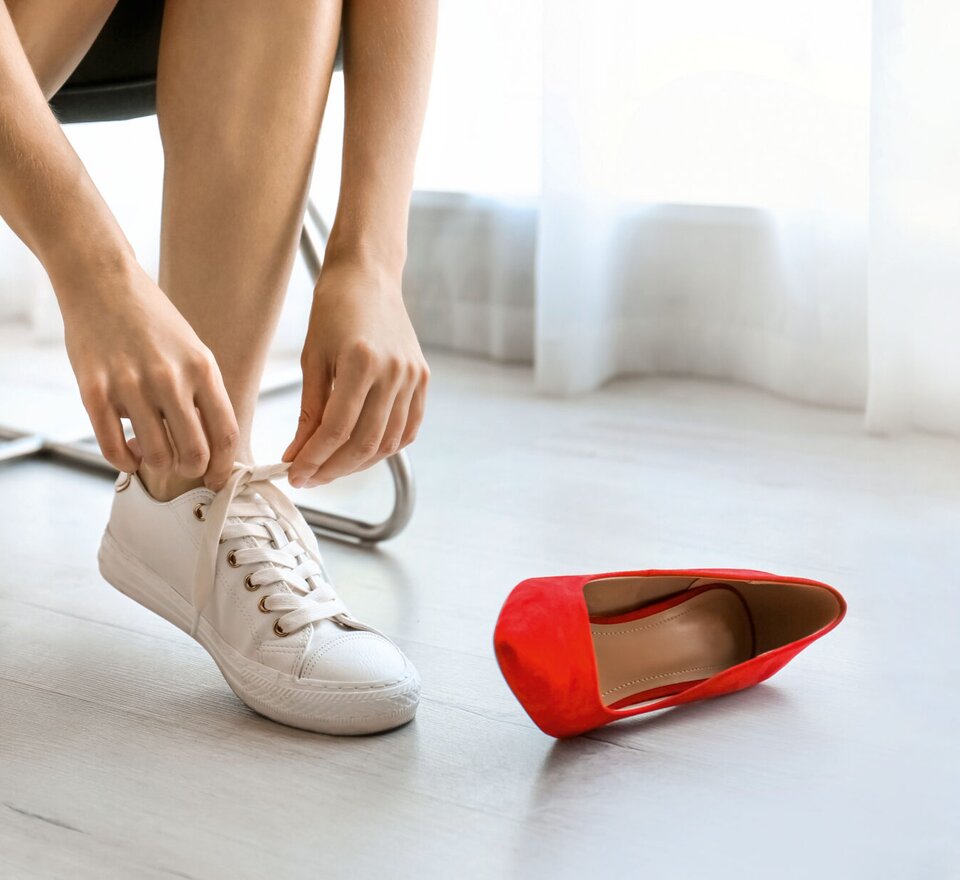They are among the most trusty companions when working from home, because they are comfy, no-fuss and timeless. We’re talking about traditional jogging bottoms. Karl Lagerfeld would presumably strongly disagree but, for sheer comfort, jogging bottoms were the must-have item of clothing during the pandemic.
And because, as we all know, humans are creatures of habit, they don’t like leaving their comfort zone. OK, perhaps jogging bottoms are an extreme example. Even though it goes without saying that Generation Z are keen on very casual clothing and may quite like the idea of jogging bottoms in the office, in practice this cult garment has not yet become firmly established there. But something that has changed since the return to the office is a certain new laxity in the dress code and a growing reluctance to force ourselves into uncomfortable clothing.
So in many offices, the time has come to bid adieu to the suit and tie. After all, according to a survey by the management and technology consultant BearingPoint, only two per cent of the office employees questioned can still imagine sitting at their desk wearing a suit. The only exception would be for official meetings with their managers or with business partners. There are also financial reasons for the change. BearingPoint says that the average expenditure on business wear in 2019 was about 1,700 euros per year. During the pandemic, the figure was only about 480 euros on average. Especially where staff are in regular contact with customers, this is now giving rise to a dilemma: too strict a dress code scares employees off, while outfits that are too casual could look unprofessional.
Smart casual is the new chic
One thing’s for sure: we’ll never go back to pre-pandemic standards. Yet it would be hard to define a generally applicable dress code, and it would vary greatly between different jobs. Nevertheless, the so-called smart casual look offers a possible way to combine comfort and elegance. The defining characteristic of this style is a combination of informal garments with more formal ones, for example dark jeans with a blazer. Fashion experts say that the most important thing is to make sure that the materials look high-quality. Open-toed shoes, prints and gaudy colour combos are taboo, even for the smart casual look. One absolute must-have is the white T-shirt, which goes with anything and instantly makes any style look cool.
Sneakers instead of high heels
High heels and narrow, formal lace-ups are the absolute epitome of discomfort. That’s why, as of now, comfort’s the thing when it comes to shoes, too. Comfortable sneakers have long since made their way into the office and are often even teamed with a suit. But be careful, here again the experts warn that shoes should be in plain colours like black or white and not decorated with jazzy patterns or colourful designs.
Come as you are
As we’ve already suggested, the younger generation in particular is increasingly displaying a more relaxed attitude when it comes to clothing. So in some start-ups – not many, but some – the guideline is: “Come as you are.” From shirts to flip-flops, anything goes here. The idea is to dress to suit your own personality, not just to follow every fashion trend. So in conclusion? Let’s see what the experts recommend: depending on the corporate culture and the industry, the dress code should be openly renegotiated with the employees. Ideally, such a dialogue will lead to mutual understanding and a compromise solution. So it sounds like smart casual… Or is the tie about to celebrate a revival?
©AdobeStock

